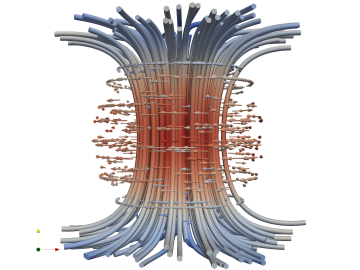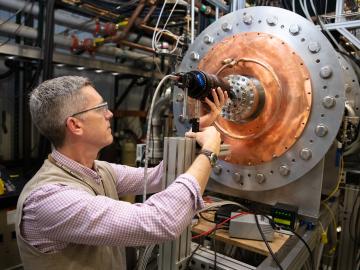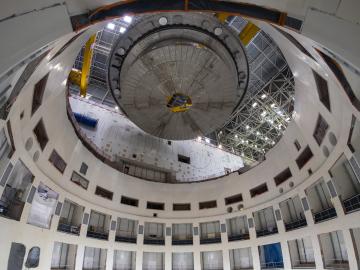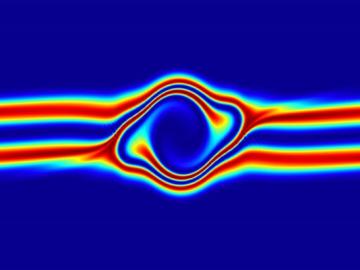
Filter News
Area of Research
- (-) Fusion Energy (5)
- Advanced Manufacturing (4)
- Biology and Environment (17)
- Clean Energy (69)
- Climate and Environmental Systems (2)
- Computer Science (2)
- Energy Sciences (1)
- Fusion and Fission (5)
- Isotopes (4)
- Materials (50)
- Materials for Computing (5)
- National Security (12)
- Neutron Science (27)
- Nuclear Science and Technology (22)
- Nuclear Systems Modeling, Simulation and Validation (2)
- Quantum information Science (3)
- Supercomputing (38)
News Type
Media Contacts

A developing method to gauge the occurrence of a nuclear reactor anomaly has the potential to save millions of dollars.

Combining expertise in physics, applied math and computing, Oak Ridge National Laboratory scientists are expanding the possibilities for simulating electromagnetic fields that underpin phenomena in materials design and telecommunications.

Temperatures hotter than the center of the sun. Magnetic fields hundreds of thousands of times stronger than the earth’s. Neutrons energetic enough to change the structure of a material entirely.

ITER, the world’s largest international scientific collaboration, is beginning assembly of the fusion reactor tokamak that will include 12 different essential hardware systems provided by US ITER, which is managed by Oak Ridge National Laboratory.

The prospect of simulating a fusion plasma is a step closer to reality thanks to a new computational tool developed by scientists in fusion physics, computer science and mathematics at ORNL.


